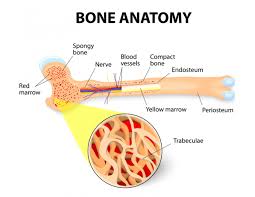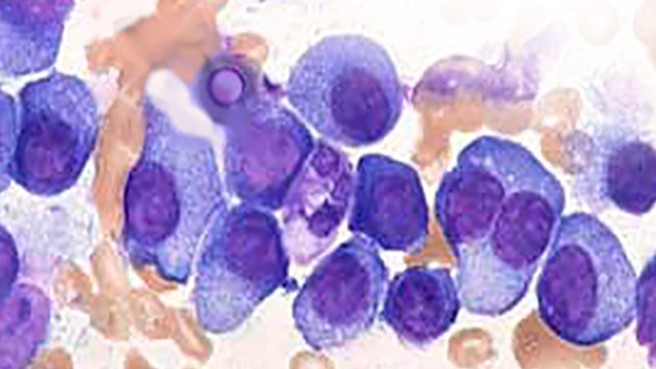“Supportive care targeting bone disease is an essential adjunct to antimyeloma therapy. In addition, the maintenance of bone health in patients with multiple myeloma can significantly improve…”
According to research approximately 90% of multiple myeloma patients and survivors will experience bone damage during their lives living with this incurable blood cancer. To complicate things, multiple myeloma chemotherapy regimens such as dexamethasone are known to weaken bones. The answer, in the opinion of this long-term multiple myeloma survivor, is an anti-MM lifestyle that includes non-toxic bone health as multiple myeloma therapy.

A diagnosis of multiple myeloma, regardless of stage, brings a recommendation of conventional bone therapy such as bisphosphonates. While aredia, pamidronate, other bisphosphonate therapies may enhance bone health in the short term, long-term bisphosphonate therapy has been shown to increase the risk of side effects such as osteonecrosis of the jaw (ONJ).
The little known fact long-term bone health is that it is easy. Bone heath can be enhanced naturally. The article linked and excerpted below cites how 12 minutes of yoga daily improves:
- bone strength,
- range of motion,
- muscle strength,
- balance,
- coordination and
- reduces anxiety.
A person can improved his/her bone health before or after a fracture, young or old, anytime. The sooner you start the better you will weather a bone problem.
No equipment and no gym membership is required.To increase your bone health further, there are evidence-based supplements and nutrition that are proven bone therapies.
For more information about bone health, scroll down the page, post a question and I will reply ASAP.
Thank you,
David Emerson
- MM Survivor,
- MM Cancer Coach
- Director PeopleBeatingCancer
Recommended Reading:
“Yoga enthusiasts link the practice to a long list of health benefits, including greater flexibility and range of motion, stronger muscles, better posture and balance, reduced emotional and physical stress, and increased self-awareness and self-esteem…
So in 2005, Dr. Fishman began a small pilot study of yoga moves that turned up some encouraging results. Eleven practitioners had increased bone density in their spine and hips, he reported in 2009, compared with seven controls who did not practice yoga…
Knowing that more than 700,000 spinal fractures and more than 300,000 hip fractures occur annually in the United States, Dr. Fishman hoped that similar findings from a much larger study might convince doctors that this low-cost and less dangerous alternative to bone-loss drugs is worth pursuing…
Many of those who avoided drugs (bisphosphonate drugs) were trying to avoid gastrointestinal problems.
On the other hand, yoga’s “side effects,” Dr. Fishman and colleagues wrote recently, “include better posture, improved balance, enhanced coordination, greater range of motion, higher strength, reduced levels of anxiety and better gait…”
“Yoga looks like it’s safe, even for people who have suffered significant bone loss,” Dr. Fishman said in an interview…
“Spinal fractures can result from poor posture, and there’s no medication for that, but yoga is helpful,” he said.
In addition, “Yoga is good for range of motion, strength, coordination and reduced anxiety,” he said, “all of which contribute to the ability to stay upright and not fall. If you don’t fall, you greatly reduce your risk of a serious fracture.””
“Weight-bearing and resistance exercises are the best for your bones. Weight-bearing exercises force you to work against gravity. They include
- walking,
- hiking,
- jogging,
- climbing stairs,
- playing tennis, and
- dancing.
Resistance exercises – such as lifting weights – can also strengthen bones. Other exercises such as swimming and bicycling can help build and maintain strong muscles and have excellent cardiovascular benefits, but they are not the best way to exercise your bones.
Remember, exercise is only one part of an osteoporosis prevention or treatment program. Like a diet rich in calcium and vitamin D, exercise helps strengthen bones at any age.
But proper exercise and diet may not be enough to stop bone loss caused by medical conditions, menopause, or lifestyle choices such as tobacco use and excessive alcohol consumption.
It is important to speak with your doctor about your bone health. Discuss whether you might be a candidate for a bone mineral density test. If you are diagnosed with low bone mass, ask what medications might help keep your bones strong…”
“About 90% of individuals with multiple myeloma will develop osteolytic bone lesions from increased osteoclastic and decreased osteoblastic activity. Severe morbidities from pathologic fractures and other skeletal events can lead to
- poor circulation,
- blood clots,
- muscle wasting,
- compromised performance status,
- and overall poor survival.
Supportive care targeting bone disease is an essential adjunct to antimyeloma therapy. In addition, the maintenance of bone health in patients with multiple myeloma can significantly improve quality of life…
“Osteoporosis and low bone mineral density affect millions of Americans. The majority of adults in North America have insufficient intake of vitamin D and calcium along with inadequate exercise. Physicians are aware that vitamin D, calcium and exercise are essential for maintenance of bone health.
Physicians are less likely to be aware that dietary insufficiencies of
- magnesium,
- silicon,
- Vitamin K,
- and boron
are also widely prevalent, and each of these essential nutrients is an important contributor to bone health. In addition, specific nutritional factors may improve calcium metabolism and bone formation. It is the authors’ opinion that nutritional supplements should attempt to provide ample, but not excessive, amounts of factors that are frequently insufficient in the typical American diet…”




